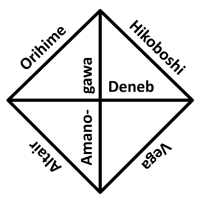— Pontius Pilate
Explanations come to an end somewhere.
— Ludwig Wittgenstein
I read that Edmund Gettier died recently, famous for the problem of knowledge named after him. He argued that justified true belief may not really be knowledge, and gave counterexamples for it not being so.
Here I show a diagram for those three conditions (Justified, True, Belief) and their opposites (Baseless, False, Doubt). The Wikipedia page on the Gettier problem states simply that the solution for it is that the justification must be true also, as the belief.
I don’t want to be posing as Pilate, but it does seems that truth is the most difficult and elusive of the three criteria, conditioning as it must the other two. In this age of disinformation, you could do worse than read the articles below.
Further Reading:
https://en.wikipedia.org/wiki/Gettier_problem
https://en.wikipedia.org/wiki/Edmund_Gettier
https://plato.stanford.edu/entries/knowledge-analysis/
https://plato.stanford.edu/entries/epistemology/
https://www.researchgate.net/publication/318135910_Justified_True_Belief_Plato_Gettier_and_Turing
[*10.88]
<>







 Further Reading:
Further Reading:






